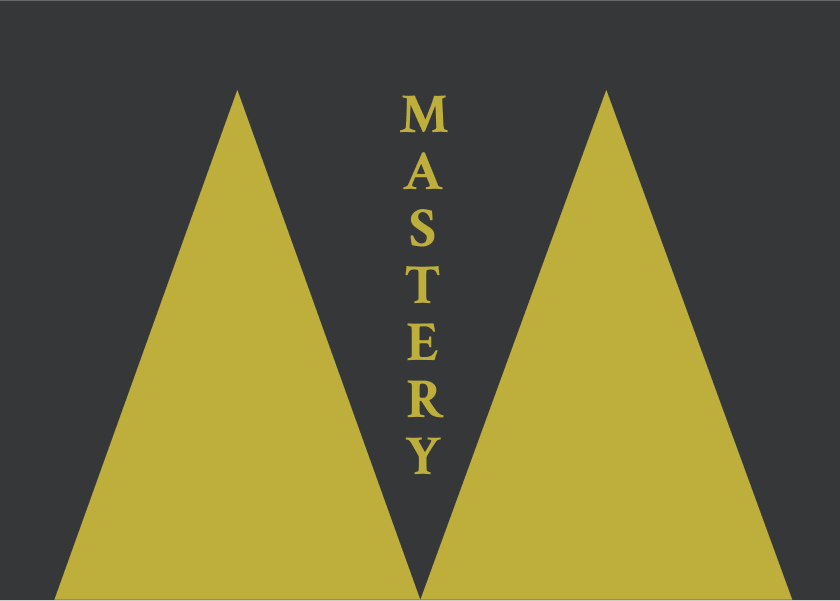Black Box Thinking by Matthew Syed - Summary
Failure isn't the end; it's the beginning. Discover how to learn from mistakes like Google and Team Sky. Unlock innovation, progress, and resilience. Redefine failure & achieve more.

The following is a summary and review of the book Black Box Thinking by Matthew Syed.
Turn Mistakes into Masterstrokes
Ever wondered why some individuals and organisations skyrocket to success while others stagnate despite facing similar setbacks? Matthew Syed's groundbreaking book, Black Box Thinking: Why Most People Never Learn from Their Mistakes--But Some Do, delves into this critical question, arguing that our attitude towards failure is the pivotal factor. Drawing on compelling real-world examples from diverse fields like aviation, healthcare, and sports, Syed reveals how embracing and analysing our errors – much like the aviation industry's use of 'black boxes' – can unlock unprecedented levels of innovation, progress, and resilience.
Table of Contents
- About the Author
- Who Should Read This Book?
- Key Insights and Themes
- Detailed Summary
- Review
- Actionable Takeaways
- FAQs
- Conclusion
About the Author
Matthew Syed is a highly acclaimed British journalist, broadcaster, and author, renowned for his insightful analysis of sports, culture, and the science of high performance. He is a multi-award-winning columnist for The Times and has presented numerous documentaries and radio programmes. Syed is also a former international table tennis champion, providing him with a unique perspective on the role of practice, learning, and setbacks in achieving excellence. His previous bestseller, Bounce: The Myth of Talent and the Power of Practice, established him as a leading voice in the field of human potential. In Black Box Thinking, Syed builds upon his expertise to explore the crucial role of failure in driving progress across various domains.
Who Should Read This Book?
Black Box Thinking is an essential read for anyone seeking to improve, innovate, and build resilience in the face of challenges. This includes:
- Leaders and managers who want to cultivate a growth-oriented culture within their organisations, where mistakes are seen as opportunities for learning rather than grounds for blame.
- Individuals in high-stakes professions, such as healthcare professionals and pilots, who can glean crucial insights into the importance of open reporting and systematic analysis of errors.
- Entrepreneurs and innovators who need to embrace experimentation and learn rapidly from failures to develop successful products and services.
- Anyone interested in personal growth and development who wants to overcome the fear of failure and harness its power to achieve their goals.
- Those involved in education and coaching who aim to foster a mindset of learning and continuous improvement in their students or athletes.
Whether you are striving for peak performance in your career, seeking to build a more effective team, or simply aiming to learn and grow as an individual, Black Box Thinking offers invaluable lessons and a transformative perspective on the role of failure in the journey towards success.
Key Insights and Themes
Here are some key takeaways and main ideas explored in Black Box Thinking:
- The aviation industry provides a powerful model for learning from failure through its rigorous and blameless investigation of accidents, embodied by the 'black box'.
- Many other sectors, particularly healthcare, struggle to learn from mistakes due to a culture of blame, fear of litigation, and the use of euphemisms to avoid acknowledging errors.
- Cognitive dissonance plays a significant role in our inability to learn from failure, as we often subconsciously distort information to protect our self-esteem and existing beliefs.
- A 'closed loop' mentality prevents learning by failing to interrogate errors and sometimes even failing to recognise that a mistake has been made.
- True progress and innovation are driven by a willingness to confront failure and extract valuable lessons from it.
- Marginal gains, small incremental improvements achieved through continuous testing and learning, can lead to significant cumulative success, as exemplified by Team Sky and Mercedes Formula One.
- Experimentation and the 'minimum viable product' (MVP) approach are crucial for innovation, allowing for early failure and rapid learning in complex environments.
- The fear of blame creates defensive behaviours that hinder open reporting and learning from mistakes within organisations.
- Cultivating a 'growth mindset', as opposed to a 'fixed mindset', is essential for embracing challenges and learning from setbacks.
- Redefining failure as a learning opportunity is the crucial first step towards fostering a culture of progress, creativity, and resilience.
Detailed Summary
The book is divided into six parts, each exploring different facets of our relationship with failure and how to improve it.
Part I: The Logic of Failure
A Routine Operation
Syed begins with the tragic story of Elaine Bromiley, who died during a routine anaesthetic procedure due to a series of errors that went unrecognised and unaddressed. This illustrates the healthcare industry's struggle to learn from mistakes. The healthcare professionals involved did not recognise the underlying problem from their first-person perspective, highlighting how 'closed loops' can perpetuate.
United Airlines 173
This chapter contrasts healthcare with aviation, showcasing how the analysis of the 1978 United Airlines Flight 173 crash, where the crew became fixated on a potential landing gear issue and ran out of fuel, led to significant advancements in flight deck resource management (CRM). The investigation report recommended "participative management for captains and assertiveness training for other cockpit crewmembers". This demonstrated the aviation industry's commitment to learning from adverse events through thorough investigation.
The Paradox of Success
Syed examines the celebrated landing of US Airways Flight 1549 on the Hudson River by Captain Chesley Sullenberger. While Sullenberger's skill was lauded, aviation experts also recognised the role of the system, including Crew Resource Management, in the successful outcome. This highlights that even in success, there are lessons about the systems and processes that contribute to the result. The death of a patient at Virginia Mason Hospital also served as a "rallying cry" for the staff to recognise the seriousness of patient safety, leading to a culture where reporting mistakes was praised, not punished.
Part II: Cognitive Dissonance
Wrongful Convictions
This section explores how cognitive biases can lead to catastrophic errors in the criminal justice system, focusing on cases of wrongful convictions later overturned by DNA evidence. Prosecutors, like Montana prosecutor McGrath in the case of Jimmy Ray Bromgard, may struggle to accept evidence that contradicts their initial beliefs due to their investment in the integrity of the system. This highlights the power of cognitive dissonance in maintaining flawed beliefs.
Intellectual Contortions
Syed delves deeper into the psychology of cognitive dissonance, illustrating how individuals, even highly intelligent ones, will go to great lengths to justify their past decisions and maintain their self-esteem, even in the face of contradictory evidence. Examples include Tony Blair's justifications for the Iraq War and economists who failed to predict inflation after the 2008 financial crisis.
Reforming Criminal Justice
This chapter examines efforts to reform the criminal justice system to reduce wrongful convictions, such as improved eyewitness identification procedures and the use of DNA evidence. The story of Neil deGrasse Tyson misattributing a quote to George W. Bush after 9/11 illustrates the fallibility of memory and the importance of verifiable facts. The chapter also touches on the unreliability of techniques like hair microscopy in forensic science.
Part III: Confronting Complexity
The Nozzle Paradox
Syed uses the example of Unilever's detergent manufacturing process to illustrate the challenges of optimising complex systems. Simple, top-down solutions often fail to address the nuances of intricate processes. He contrasts this with the "little bets" approach, where small, iterative experiments are used to navigate complexity and learn what works, as seen in the development of the online information service 1-800-411-SAVE. The story of the computer scientist Rick, who spent years perfecting a programming language instead of releasing his web service, highlights the dangers of "perfectionism".
Scared Straight?
This chapter critiques the "Scared Straight" program, which aims to deter juvenile delinquency by exposing teenagers to prison life. Despite its intuitive appeal and media attention, rigorous randomised controlled trials (RCTs) have consistently shown that such programs are ineffective and can even be harmful. This exemplifies the danger of relying on compelling narratives rather than data-driven evidence. The case of Angelo Speziale, who participated in "Scared Straight" and later committed a similar crime, serves as a disturbing illustration.
Part IV: Small Steps and Giant Leaps
Marginal Gains
Syed explores the philosophy of marginal gains, popularised by Sir Dave Brailsford and Team Sky, where small, incremental improvements in every aspect of performance lead to significant overall gains. He contrasts this approach with the debate on the efficacy of large-scale aid efforts in Africa, where a lack of rigorous testing makes it difficult to determine what truly works. The success of Mercedes Formula One is also attributed to the relentless pursuit of optimising countless small details. Google's testing of different shades of blue highlights the power of data-driven decision-making even in seemingly minor details.
How Failure Drives Innovation
This chapter examines the creative process, arguing that innovation is often an iterative process involving numerous small failures and refinements. The initial, flawed concepts for Pixar's "Monsters, Inc." demonstrate how criticism and testing can lead to breakthrough ideas. Syed also highlights that while innovation is important, it is not always sufficient for success, as seen in the comparison between Genentech and Amgen. Brainstorming, while seemingly encouraging creativity, can sometimes stifle it by discouraging critical feedback. True creativity often arises from the synthesis of different ideas and perspectives, facilitated by both focused work and periods of relaxation.
Part V: The Blame Game
Libyan Arab Airlines Flight 114
This chapter analyses the shooting down of Libyan Arab Airlines Flight 114 by Israeli fighter jets in 1973. The incident illustrates how a culture of blame can hinder learning from mistakes, as individuals and organisations become defensive and avoid taking responsibility. Amy Edmondson's work on organisational learning highlights that psychological safety is crucial for teams to openly discuss errors and learn from them.
The Second Victim
Syed discusses the concept of the "second victim" – the healthcare professional who makes an error and suffers psychological distress as a result. The case of Baby P in the UK highlights how a blame culture can lead to the scapegoating of individuals and obscure systemic issues. The November Oscar incident involving a pilot landing a jet with insufficient fuel also demonstrates the tendency to blame individuals rather than examining underlying systemic factors . A just culture, which balances safety and accountability, is essential for fostering learning and preventing future errors.
Part VI: Creating a Growth Culture
The Beckham Effect
This chapter explores the psychological factors that contribute to a willingness to confront and learn from failure, using David Beckham's dedication to practice as an example. Research on mindset reveals the differences between individuals with a 'fixed mindset' (who believe abilities are innate) and a 'growth mindset' (who believe abilities can be developed through effort and learning). Those with a growth mindset are more likely to embrace challenges and persist through setbacks.
Redefining Failure
Syed concludes by reiterating the importance of redefining failure as a crucial part of the learning process. He highlights initiatives like "failure week" in schools, designed to encourage students to embrace mistakes. He also discusses the phenomenon of self-handicapping, where individuals create obstacles to their own success to protect their self-esteem in case of failure. Ultimately, cultivating a culture that values openness, learning, and resilience is essential for progress at all levels. The work of Martin Bromiley in advocating for patient safety after his wife's death serves as an inspiring example of turning personal tragedy into a catalyst for systemic change.
Coda: The Big Picture
The Coda reinforces the central argument of the book, drawing on the philosophy of Karl Popper and the scientific method to emphasise that progress is driven by the relentless testing of ideas and the willingness to learn from errors. Syed argues that a culture that embraces 'black box thinking' – honest reflection and learning from failures – is essential for human advancement in all fields.
Review
Black Box Thinking is a compelling and insightful exploration of a crucial topic that is often misunderstood or ignored. Syed masterfully weaves together compelling anecdotes, rigorous research, and practical frameworks to make a powerful case for redefining our relationship with failure. The book's greatest strength lies in its diverse range of examples, drawn from fields as varied as aviation, healthcare, sports, and business, which effectively illustrate the universality of the principles discussed. Syed's writing is engaging and accessible, making complex psychological concepts understandable to a broad audience.
One potential area for critique might be the density of information presented in the book. While the numerous examples are a strength, some readers might find the sheer volume of case studies and research findings overwhelming at times. However, this thoroughness ultimately strengthens the book's argument and provides ample evidence for its central claims.
Overall, Black Box Thinking is a thought-provoking and highly valuable read that offers a transformative perspective on failure. It challenges conventional wisdom and provides a clear roadmap for how individuals and organisations can learn more effectively from their mistakes to achieve greater success.
Actionable Takeaways
Here’s how to apply these lessons in real life:
- Cultivate a culture of psychological safety in your team or organisation where individuals feel comfortable admitting mistakes without fear of blame.
- Implement systematic processes for analysing errors and near misses, similar to the aviation industry's 'black box' approach. Focus on identifying the root causes rather than assigning blame.
- Actively seek feedback on your performance and be open to constructive criticism. View feedback as valuable data for improvement.
- Challenge your own cognitive biases and be willing to question your assumptions, even when faced with evidence that contradicts your existing beliefs.
- Embrace experimentation and adopt a 'little bets' mentality when tackling complex problems. Test small ideas and learn from the outcomes, both successes and failures.
- Redefine your personal understanding of failure as a learning opportunity rather than a sign of incompetence. Adopt a 'growth mindset' that sees setbacks as stepping stones to improvement.
- Focus on marginal gains by identifying small, incremental improvements that can be made in your processes and practices.
- Be wary of the 'narrative fallacy' and rely on data and evidence rather than solely on compelling stories when evaluating the effectiveness of strategies and interventions.
- Practice self-reflection to identify your own mistakes and the lessons you can learn from them.
- Encourage open communication and dissent within your teams to challenge conventional thinking and foster more creative solutions .
FAQs
- What is "Black Box Thinking" about? "Black Box Thinking" by Matthew Syed explores why some individuals and organisations are effective at learning from their mistakes while others are not. It argues that a crucial difference lies in their attitude towards failure: those who embrace and analyse errors as learning opportunities are more likely to achieve progress, innovation, and resilience. The book draws on examples from various fields, including aviation, healthcare, sports, and business, to illustrate these principles.
- Is "Black Box Thinking" worth reading? Yes, "Black Box Thinking" is highly recommended for anyone interested in personal and professional growth, leadership, innovation, and understanding the psychology of learning from experience. The book offers valuable insights and actionable strategies for transforming your relationship with failure and fostering a culture of continuous improvement.
- What is the main message of "Black Box Thinking"? The main message is that failure is not the opposite of success but an integral part of it. By adopting a mindset of open inquiry, rigorous analysis, and a willingness to learn from our mistakes – much like the aviation industry's use of black boxes – we can unlock significant potential for growth and achievement.
- How does "Black Box Thinking" relate to the aviation industry? The book uses the aviation industry as a central example of a sector that has made remarkable progress in safety by systematically investigating accidents and learning from them in a blameless manner. The 'black box' flight recorder symbolises this commitment to extracting valuable lessons from failures to prevent future tragedies.
Conclusion
Matthew Syed's Black Box Thinking provides a powerful and persuasive argument for embracing failure as a vital catalyst for progress. By understanding the psychological barriers that prevent us from learning from our mistakes and by adopting the principles of open inquiry, systematic analysis, and a growth-oriented mindset, we can transform setbacks into springboards for success. This book serves as a crucial reminder that true learning and innovation are not about avoiding errors, but about having the courage and wisdom to confront them, analyse them, and ultimately, learn from them. Embrace the power of 'black box thinking' and unlock your potential for continuous improvement and lasting achievement.
As an Amazon Associate, ShelfHelp may earn money from qualifying purchases. Needless to say, ShelfHelp only includes affiliate links to books we recommend and think are worth your time reading.




